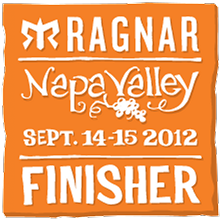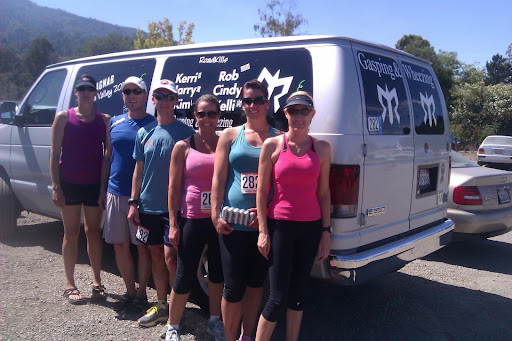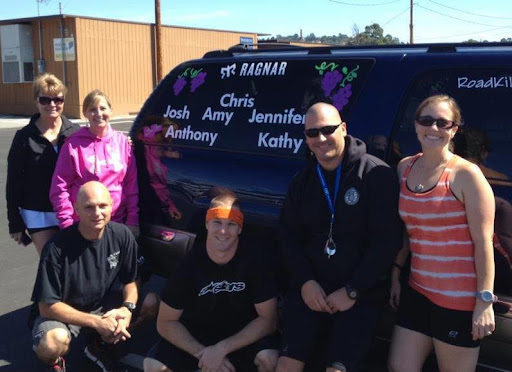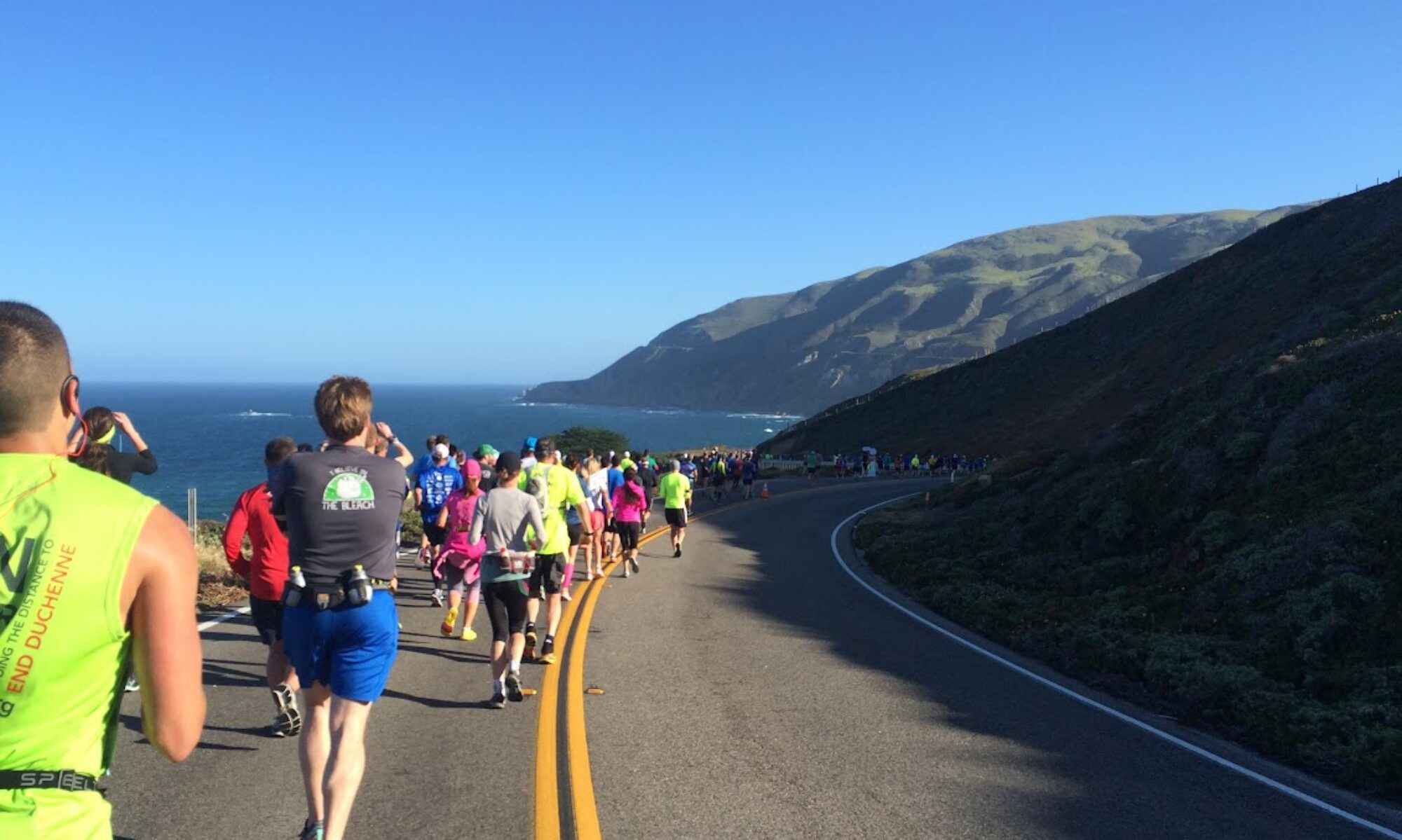| Leg | Mileage | Difficulty | Pace | Road Kills |
|---|---|---|---|---|
| #2 | 2.7 mi | Easy | 6:55 min/mi | 7 |
| #14 | 4.7 mi | Moderate | 7:50 min/mi | 3 |
| #26 | 8.3 mi | Very Hard | 7:50 min/mi | 24 |

31 hours, 36 legs, 194 miles
For those that don’t know what Ragnar is, there are currently fifteen relays offered across the US, from Cape Cod to Huntington Beach, the Keys to the Northwest Passage. All of the races are about 200 miles, and made up of teams of 12 (or 6 if you’re an Ultra team) runners. Each runner runs 3 legs, averaging 17 miles total over 30 or so hours. For the Napa race, we start just below the Golden Gate Bridge, make our way up the coast to wind our way through Napa Valley, and end in Calistoga.

The race itself was a lot of fun. Thirty hours stuck in an aromatic van with six people, shuttling from place to place, supporting each other, running, competing, and having fun. Kim, Kerri, Kelli, Cyndi, Harry… thank you for making it a great fun time. Amy, thanks for organizing the whole thing! And Jenn, Kathy, Anthony, Chris, and Joshua… thanks for being my barely-seen partners in van 2. Seventeen miles wasn’t really enough to justify there days of race time, and if I do this again, I think I’ll do it on an ultra team, but it was definitely a whole lot of fun.
Logistics, Logistics, Logistics
The main thing about this race, is that so much of your time is spent on logistics. With three to five mile runs, you’re spending the first few minutes of each exchange trying to let the last runner stretch, relax, and settle down, then rushing out to the next exchange to make sure the next runner is in place before the current runner finishes.
On the longer runs, the same thing, except we get the chance to stop a couple miles in to the run, check on the runner, then move ahead to do the same another mile or two down the road.
On the breaks between vans, it’s just enough time to get a bit of food, rest for a couple hours, then it’s right back to the course to start again. I guess that’s why one of their event shirts says “Run Drive Sleep? Repeat”
Van #1 — the better van


Better runners? Better attitude? No, really, I’m just talking about the better legs. Morning start, including the Golden Gate Bridge. Evening runs — meaning we get a chance to sleep at night. And then morning runs — we get to skip the 100+ degree heat.
My three legs were as follows: Leg #2 – 2.7 miles from the end of the Golden Gate Bridge quickly downhill into Salinas, and faster than my normal 5k pace! -206 feet in less than three miles… brilliant. Leg #14 – 4.7 miles of generally flat roads, with one large hill in the middle in Petaluma, starting in the early evening and finishing at dusk, pacing low 7s except for the hill at 9s. Leg #26 – 8.3 miles of moderately hilly roads along Highway 12 in Sonoma at 7am on Saturday.
A Slab of Lab or a Smear of Deer?
Road Kills are a new idea to me, and from my research, specific to this type of long-distance relay. Road kills are essentially a count of how many people you pass along the race. Could you do this on a normal race? No way — I mean, I passed over 7,000 people on my first Disneyland Half, so there’s no way to count that. But on a race with around 400 teams, spread out across 15 different start waves, and intentionally ungrouped, then counting your kills becomes possible.

So race leg one, just under three miles, and I pass seven people. Leg two, low sevens except for a single hill, and just under six miles… and I pass three people? By that time, I knew that single digit kill counts was pretty normal, but I figured with a good pace, three seemed too low. So going into my long segment on Saturday morning, I didn’t have too much hope for a great number. Yet I passed twenty-four people on that leg!
The great part about kills, though, isn’t passing people, it’s the ability for small goals to push you faster. A person a few hundred feet ahead? Time to pick up the pace. A group ahead… gold mine! Sub-7s? Mid-to-low 7s? There’s no question that having some intermediate goals helped keep me energy going, even on the third day while running on two and a half hours of sleep.
